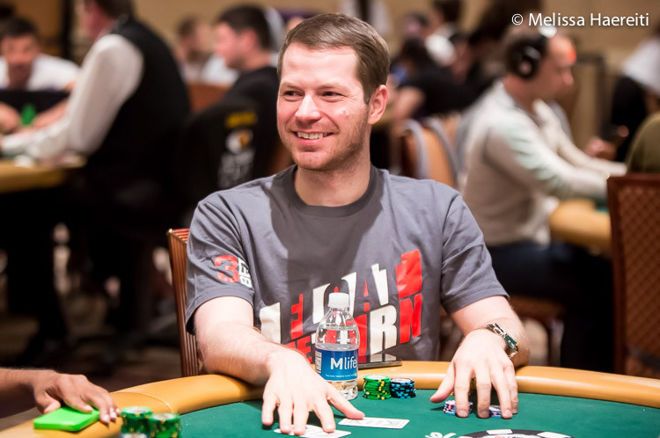Jonathan Little on When You Should Go for a Check-Raise Holding the Nuts on the River

Sometimes when you river the nuts you should go for a check-raise, but how do you know when? In this week’s strategy column, I discuss it using a hand from a $5/$10 no-limit hold’em cash game I played.
Here’s how it went down. Action was eight-handed when it folded to the player on the button, who was sitting with $1,900 and opted to open for $40. The small blind folded and I looked down at the Q♣9♣ in the big with around $2,150 in my stack.
Usually in a spot like this, where the open is big and we’re deep, I actually tend not to defend too light. That’s because when there is rake where the house takes a cut out of the pot whenever you see a flop, and the fact you’re out of position, all of these things should make you defend substantially tighter.
All that aside, I decided to three-bet by making it $165 to go. This is a spot where a lot of players get in the habit of calling with a hand that flops well but just check-folding whenever they miss. That’s way too weak. You’re actually better off taking these hands and bluffing with them part of the time, which I was doing here. When out of position you want to diminish the effect of the deep stacks to the best of your ability, which means raising a bit larger, such as four times the amount of the raise.
My opponent called and the flop fell Q♥8♣2♦ giving us top pair. You can bet or check, I think both plays are viable, and we went for a small bet of $110. My opponent called and the dealer burned and turned the 4♣ giving us a backdoor flush draw.
"Now, if I keep betting on the turn, what is my opponent going to call with? You have to be honest with yourself."
Now, if I keep betting on the turn, what is my opponent going to call with? You have to be honest with yourself. If you bet big, your opponent is likely to only call with a big hand, such as a better queen here, and folding out the rest, such as an eight or deuce. So, I could find myself in a spot where I’m only getting called when I’m in bad shape. That’s not something I want.
We’re in great shape if we check and our opponent bets the river, which we can call, but we’re only in marginal shape if we bet and our opponent calls. It wound up going check-check and our opponent’s range lost a lot of its bluffs. Instead, it was more likely to be small pairs or good ace-high sort of hands.
The A♣ river gave me the flush, the second nuts. If I bet, what’s going to call? Well, the ace-high is going to call because it just made a pair, but all the other small pairs are likely to fold. But what would happen if I check?
If they have the ace they’re sure to value bet, so we’d get the same money in the pot if we check. If they have a small pair, like fives or sevens, they may turn it into a bluff. By checking we give all the non-showdown-value hands an opportunity to bluff.
When you’re in a scenario with the effective nuts on the river, ask yourself what your opponent’s range looks like. If it looks like a whole lot of good hands that will value bet or just total garbage, you almost always want to check the nuts. If their range is more marginal hands, say a queen in this spot, that would check behind if I check, then you want to bet a size you think will get called.
Here I think it was a pretty good spot to check with the intention of check-raising. I do check and my opponent bets $350. Nice! Now we have to decide how much to raise. That often depends on your image, how much you’ve been mixing it up, etc.
I end up check-jamming all in for $1,925 (watch the video below to find out why) and my opponent calls off for $1,625 with the A♦8♦ for two pair. With that, I pulled in a $4,105 pot.
Note: had I bet the river, say $400, my opponent would’ve just called. I’d have extracted value and won the hand, but I also would’ve missed out on the other $1,200.
For a more thorough breakdown of this hand, check out my thoughts in the following video:
Jonathan Little is a professional poker player and author with over $7,000,000 in live tournament earnings. He writes a weekly educational blog and hosts a podcast at JonathanLittlePoker.com. Sign up to learn poker from Jonathan for free at PokerCoaching.com. You can follow him on Twitter @JonathanLittle.









